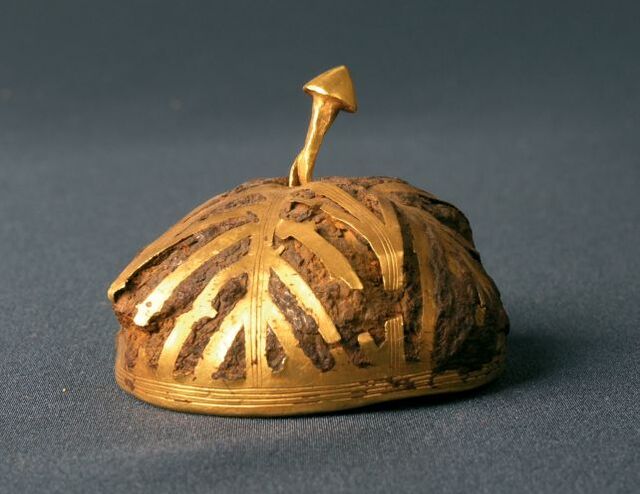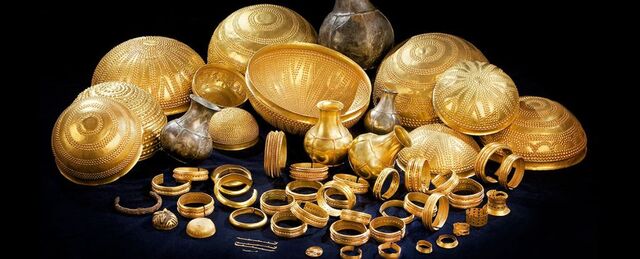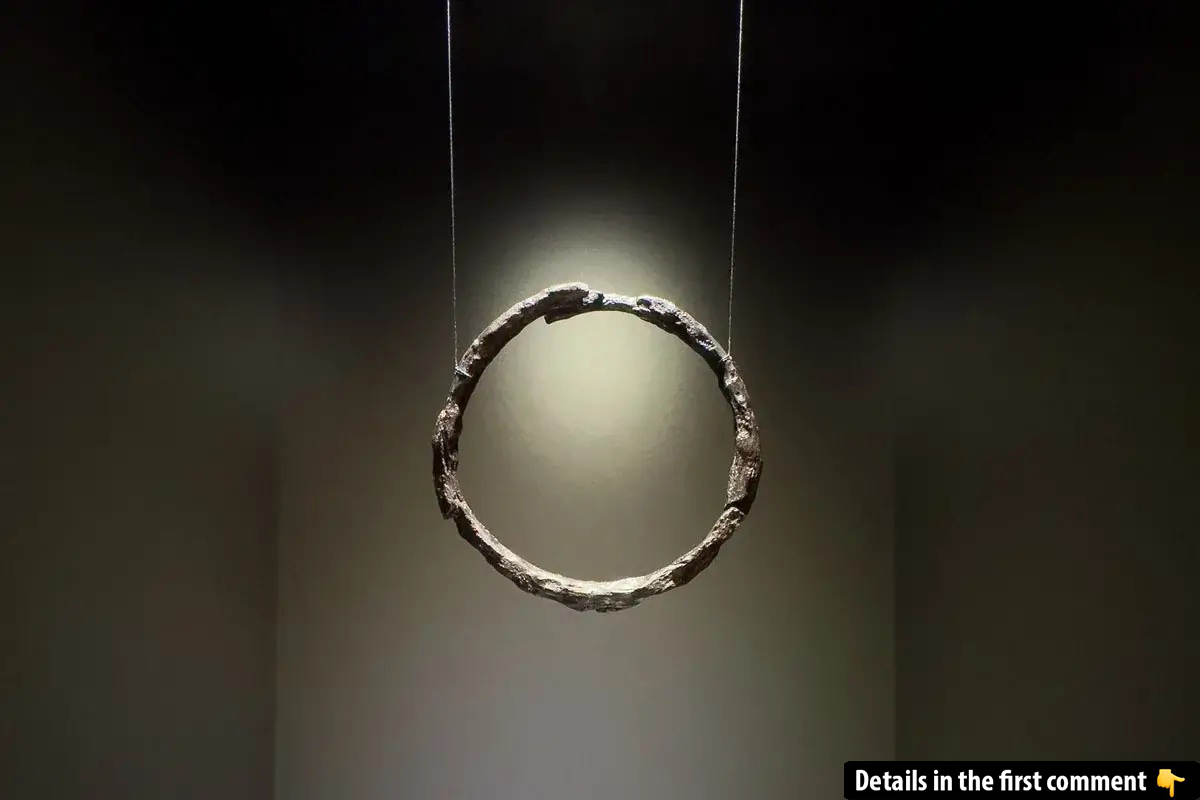In a hidden treasure trove discovered in the heart of Spain, a pair of ancient artifacts made from a mysterious metal have stunned archaeologists. The Treasure of Villena, known for its gleaming gold objects, also contains iron forged from a far more cosmic source—meteorites. This extraordinary discovery challenges our understanding of prehistoric metallurgy and connects the ancient world to the stars in a way never before imagined. The objects, dating back over 3,000 years, reveal a fascinating glimpse into the advanced craftsmanship and celestial beliefs of the Iberian Bronze Age.
The Villena Treasure: A Glimpse into Iberian Bronze Age Craftsmanship
The Treasure of Villena is regarded as one of the most important archaeological finds in the Iberian Peninsula, shedding light on the wealth and technological prowess of its Bronze Age inhabitants. Found by chance while workers were digging in 1963, this cache of 66 predominantly gold objects is considered a masterpiece of ancient goldsmithing. The artifacts, which include jewelry, weapons, and other ceremonial items, offer valuable insights into the social structures and practices of the time.

However, it is the inclusion of two particular objects in the treasure— a hollow hemisphere and a torc-like bracelet— that has captured the attention of modern archaeologists. These ferrous-looking objects, with their dull iron appearance, stood out from the predominantly gold collection. The challenge for researchers was to understand how these seemingly anachronistic artifacts fit within the broader context of the treasure, which dates to between 1500 and 1200 BCE—long before the Iron Age began in Iberia.
Video
Watch the video to learn about the strange metal from beyond our world found in an ancient treasure stash – it’s truly out of this world!
Mysterious Ferrous Artifacts: The Puzzle of the Bracelet and Hemisphere
At first, the two ferrous artifacts were assumed to be simple iron objects, but their distinct characteristics made them intriguing. The hollow hemisphere, thought to be part of a scepter or sword hilt, and the bracelet with its distinctive rusted appearance, didn’t align with the timeline for ironworking in the Iberian Peninsula, where the Iron Age didn’t start until around 850 BCE. This raised a significant puzzle for archaeologists: if these objects were made from iron, why were they included in a collection dated to the Bronze Age?

The answer, as it turns out, is far more fascinating than anyone could have imagined. After further examination, it became clear that these two items were not made from typical iron, but from meteoritic iron—iron that originates from meteorites that have fallen from space. This discovery places the objects within the same cultural period as the rest of the Villena treasure, providing an elegant solution to the chronological conundrum.
Meteoric Iron: From Meteorites to Metal

Meteoric iron has a distinct composition, including a much higher nickel content than iron extracted from Earth’s crust. This makes it possible for modern scientists to differentiate meteoritic iron from terrestrial iron through mass spectrometry. To confirm the source of the iron in the Villena artifacts, researchers subjected the two ferrous objects to this process. The results were clear: both the hollow hemisphere and the bracelet were made from meteoritic iron.
The use of meteoritic iron by ancient cultures is not as rare as one might think. Ancient peoples around the world prized this otherworldly metal, which was often considered sacred or powerful due to its celestial origins. The discovery of meteoritic iron in the Treasure of Villena mirrors similar finds in other ancient cultures, such as the famous meteoritic iron dagger of Pharaoh Tutankhamun and various Bronze Age weapons crafted from meteorites. For the people of Iberia, meteoritic iron was likely a material of extraordinary value, reserved for ceremonial or prestigious objects.
Mass Spectrometry: Unveiling the Composition of the Artifacts
Mass spectrometry proved instrumental in revealing the composition of the artifacts. This technique, which analyzes the elemental makeup of a substance, allowed researchers to identify the high nickel content in the iron. Despite the corrosion present on the objects, the scientific data strongly suggest that both the bracelet and the hollow hemisphere were forged from meteoritic iron, aligning them with the broader Bronze Age timeline of the Treasure of Villena.
Though the degree of corrosion had altered the elemental makeup of the artifacts, the mass spectrometry results were consistent with meteoritic iron. The confirmation of this composition not only resolves the dating issue but also opens up new avenues of research into how the ancient Iberians sourced and used meteoritic materials. It’s now clear that these objects were made using technology that far surpassed what was expected for the period.
The Date and Significance of the Objects in Context
The confirmation that the meteoritic iron objects were created around 1400 to 1200 BCE places them squarely within the Late Bronze Age. This is a period known for the flourishing of goldsmithing, and the presence of such advanced metallurgical techniques challenges our assumptions about the technological capabilities of Bronze Age societies.
The significance of these meteoritic iron objects goes beyond their material composition. They represent a sophisticated understanding of metallurgy, showing that the people of the Iberian Peninsula were not only capable of working gold but also of manipulating a rare and highly prized material—meteoritic iron. This discovery also suggests that trade networks or cultural exchanges may have facilitated access to meteorites, a material that would have been regarded as celestial and thus powerful.

Linking Prehistoric Societies: The Spread of Meteoritic Iron Use
The discovery of meteoritic iron in the Treasure of Villena is not an isolated find. Similar objects have been found in other ancient cultures, such as the Lusatian Culture in Poland, which dates to the Late Bronze Age and Early Iron Age. The use of meteoritic iron by these prehistoric societies indicates that the knowledge of this rare material spread across Europe and was highly valued by various groups.
The presence of meteoritic iron in these different cultures raises intriguing questions about the movement of people and ideas during this period. It suggests that there were complex networks of trade, migration, and cultural exchange, with meteoritic iron serving as a symbol of power and prestige in these societies.
Symbolism and Craftsmanship: The Value of Meteoric Iron
In many ancient cultures, meteoritic iron was more than just a material; it was imbued with deep symbolic meaning. The fact that it came from the heavens made it an object of reverence, often associated with the gods or with celestial power. The ancient Iberians, like other cultures, may have seen meteoritic iron as a divine gift, using it to create objects of great importance, such as ceremonial items or prestigious weapons.
The craftsmanship involved in working with meteoritic iron also speaks to the skill of ancient metallurgists. The use of meteoritic iron required a different set of techniques from those used to work with terrestrial iron, and the fact that it was combined with gold further emphasizes its importance in ancient Iberian culture.
The Future of Research: Non-Invasive Techniques and Further Discoveries
Although mass spectrometry has provided crucial insights into the composition of the Villena artifacts, researchers are now looking at other non-invasive techniques that could offer even more detailed data. Advances in technology may allow for further analysis without causing damage to the already corroded objects. This could include techniques like X-ray fluorescence or other forms of spectroscopy, which could help to reveal more about the production methods and symbolic significance of these meteoritic iron objects.
As research continues, the Treasure of Villena may yield even more secrets about the ancient world and its complex relationships with celestial and terrestrial materials.
Video
Check out the video on the 12 most mysterious recent archaeological finds and artifacts that scientists still can’t explain – it’s mind-blowing!
Conclusion: A Glimpse into the Cosmos Through Ancient Craft
The discovery of meteoritic iron in the Treasure of Villena is a remarkable reminder of the sophistication and ingenuity of ancient societies. It not only challenges our understanding of ancient metallurgy but also provides a window into the spiritual and cultural life of the Iberian Bronze Age.
These rare and valuable objects, crafted from material that fell from the sky, link the ancient world to the cosmos in a way that is both awe-inspiring and humbling. The Treasure of Villena continues to captivate archaeologists and historians, offering a glimpse into a past that was far more interconnected and cosmically aware than we ever imagined.



